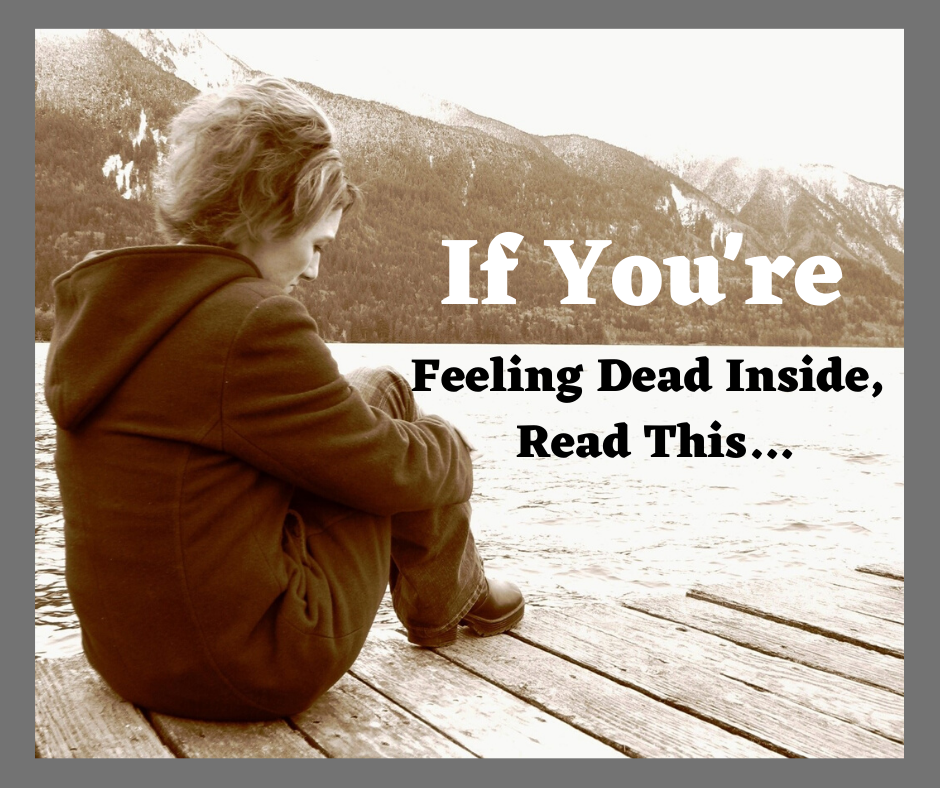IF YOU'RE FEELING DEAD INSIDE
“I can’t live with me anymore,” says Geraldine, sitting limply in the chair across from me. She grips the purse on her lap as if it was the only thing keeping her from flying off the planet into space. “I’m getting along, except so much of me is missing. I live in the shadow of my husband. A part of me is gone — his life is over, and so is mine.”
After speaking with thousands of grieving spouses and partners like Geraldine, I have come to believe this hard and simple fact: when one spouse dies it’s like both spouses die. When one partner dies, both may as well be dead. Let me explain.
After we lose a partner or spouse, a shift occurs. Day by day the reality of singleness asserts itself into our awareness—waking up alone, preparing meals for one, feeling out of place with our couple friends, the absence of that special person to share our joys, decisions and disappointments. Eventually, we become aware that the married part of our identity has suffered heart-failure. The wedding ring transforms into a symbol of a relationship that has passed from flesh and kisses into a cloud of a million memories. The halting migration of the golden band from finger, to necklace, to dresser-top and then jewellery box can be excruciating.
Geraldine so strongly identifies as married, is so deeply entwined and imprinted with her husband’s personality, habits and hopes, that his loss feels like a living death for her. Without him, she is uncomfortable in her own company, her fresh and unpracticed singleness insufficient to fill-in the innumerable blanks that have appeared on the screen of her life. Geraldine’s grief asks the question: “What is it to die while you are still alive?” It’s for this reason that writer Madelaine L’Engle suggests the death of a beloved is like an “amputation.”
In her brilliant memoir of delayed grief, The Year of Magical Thinking, Joan Didion explains the reason she refused so long to fully acknowledge her husbands death. She writes: “I know why we try to keep the dead alive: we try to keep them alive in order to keep them with us.” It sounds too simple to be profound, but it is in fact, profoundly simple. If we let our dead spouses and partners go, we are in this world without them. The lived relationship, the years of invested love and laughter and challenge are gone. We are alone, with nothing.
Geraldine’s grief called for a triple lamentation—first that she mourn her beloved husband, secondly her beloved marriage and finally, the living death of the bride—Geraldine’s identity as a spouse, her marriedness. Grieving our married self can be a hard pill to swallow. We interrogate ourselves harshly: “Isn’t it selfish to be mourning your marriage when you have so recently lost your love? Shouldn’t you be grateful for having had all of those magical years together? You knew this was the deal, so quit your whining.” And so the silent dying of our married self goes unsung and unremarked and we turn quietly from our pain as the world barrels forward.
This triple lamentation for spouse, marriage and married self is tough going and one of the reasons why spouses and partners struggle so long in their loss. Finding a way to hold love for the deceased in our hearts while we let go of the living physical connection can be crazy-making, It goes against the grain of the bonded heart.
Not every spouse or partner feels like they have died, but many do. If your wedding ring is feeling as burdensome as something Frodo might be lugging to Mount Doom, please take heart. It’s not uncommon for the loss of the marriage identity to last longer and be harder than the death of the loved-one! Grieve the marriage or partnership, the married/partnered part of yourself that has died. Tell a few trusted friends how you feel and know that you will, in your own good time, remember who you were before your loved-one died and also discover who you can be without them.

